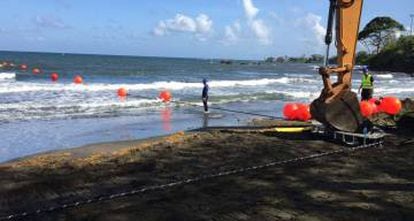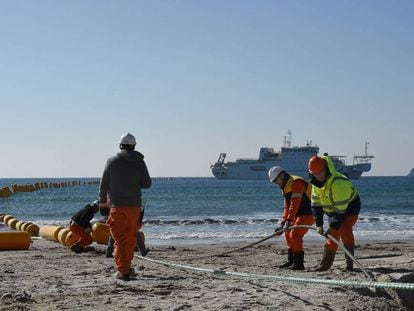Subsea cable to connect Brazil and Spain, bypassing US surveillance
Spanish PM announced the EU-sponsored project in São Paulo as part of his Latin America tour

Spanish Prime Minister Mariano Rajoy, on a tour of Latin America, joined Brazil’s Science and Technology Minister Gilberto Kassab at a joint presentation in São Paulo on Monday to introduce a new submarine fiber-optics cable that will link Brazil with Spain via Portugal.

The cable will be “neutral,” meaning that it is open to any operator, and will offer a capacity of 72 terabytes per second through four fiber pairs and 120 multiplexed channels, representing seven times more information than what is currently relayed by Latin America to the rest of the world.
The joint venture, known as EllaLink, is also meant to bypass US surveillance. It will be subject to Brazilian and European privacy protection laws, which are much stricter than US legislation.

“We will earn capacity, speed and confidentiality,” noted Rajoy, who stressed the project’s “enormous strategic value.” The cable will rout calls and internet navigation away from the US, where leaked documents show that the National Security Agency (NSA) spied on former Brazilian president Dilma Rousseff. Spain was also a victim of US espionage, according to documents obtained by former NSA analyst Edward Snowden.
Alfonso Gajate, founder and president of the Spain-based submarine cable operator IslaLink, which has partnered with Brazilian telecoms provider Telebras in the EllaLink venture (formerly known as Eulalink), noted that the Iberian peninsula is around 60 kilometers closer to Fortaleza (in northwest Brazil) than it is to Miami, and that it makes no sense to have eight out of nine existing cables that link Europe with South America going through the United States first, as is the case now.
We will gain capacity, speed and confidentiality Spanish Prime Minister Mariano Rajoy
The cable will run along more than 10,000 kilometers and connect to data centers in Madrid, Lisbon and São Paulo, officials said at the presentation. Three intermediate branches are also being planned to connect in the island nation of Cape Verde, Spain’s Canary Islands and the Portuguese island of Madeira.
The project is supported by a €25 million grant from the European Union. Ultimately, it is hoped that the network will extend throughout South America and connect with the future LSST telescope planned in Chile.
English version by Susana Urra.











































